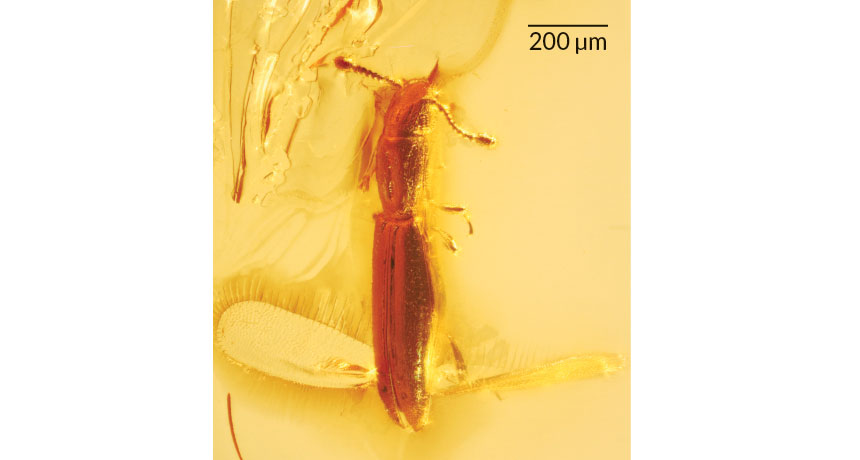Beetle saved in amber had helicopter wings
Ancestor of Jacobson beetle was also teeny tiny

TINY FLIER Feathery wings extending from the posterior of this tiny ancient beetle (in amber), the first of its kind to be discovered, may have helped it drift on the wind millions of years ago.
C. Cai et al/Journal of Paleontology 2016







